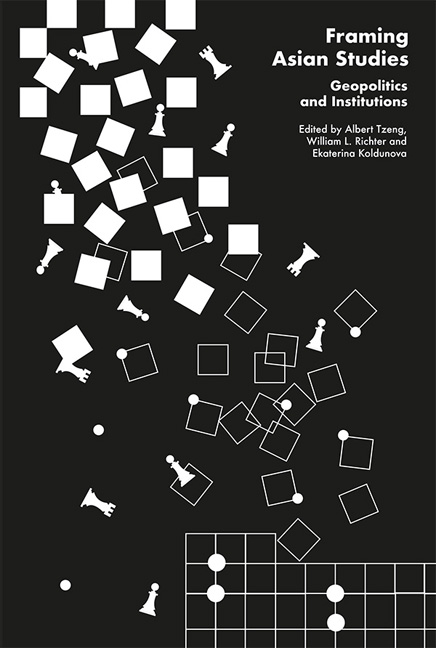Book contents
- Frontmatter
- Contents
- Foreword
- The Contributors
- 1 Introduction: Framing Asian Studies
- I Contested “Asia”
- II Geopolitical Framing of Western Discourse
- III Asian Studies in Former Soviet States
- 8 Southeast Asian Studies in Russia: Agents against Structural Limits
- 9 India Studies in Soviet Lithuania: Approaching Asia from Outside the Establishment
- IV Inter-Asian Gazes
- Index
8 - Southeast Asian Studies in Russia: Agents against Structural Limits
from III - Asian Studies in Former Soviet States
Published online by Cambridge University Press: 28 June 2018
- Frontmatter
- Contents
- Foreword
- The Contributors
- 1 Introduction: Framing Asian Studies
- I Contested “Asia”
- II Geopolitical Framing of Western Discourse
- III Asian Studies in Former Soviet States
- 8 Southeast Asian Studies in Russia: Agents against Structural Limits
- 9 India Studies in Soviet Lithuania: Approaching Asia from Outside the Establishment
- IV Inter-Asian Gazes
- Index
Summary
Southeast Asian states and Russia are not often seen as natural partners or countries engaged in a tight web of interconnections. They lack the geographical proximity which usually drives such interconnections in the political, economic and intellectual spheres and creates a shared space, literally and figuratively, of mutual practices, narratives and academic discourses. Southeast Asia would also seem to have lower strategic appeal for Russia compared to the larger entities like China or India. Historically, the region was not a sphere of colonial expansion for Russia, nor had Russia and Southeast Asia enjoyed shared cultural features which could have generated mutual interest. However, Southeast Asian Studies in Russia has not only managed to take shape but has also resulted in several wellestablished academic schools focused on area studies, linguistics and international relations in the region.
Southeast Asian Studies in Russia may be seen as falling into different periods — first, fragmented interest in the eighteenth and nineteenth centuries, then a well-grounded rise in the Soviet period, a dramatic decline in the 1990s, and more or less pragmatic stabilization in recent years. Geopolitical and structural factors shaped the background conditions for Southeast Asian Studies during each of these periods. The USSR's role as one of the geopolitical centres in the bipolar system during the Cold War presupposed its global reach both politically and intellectually. In contrast to this outreach, the early 1990s witnessed a sharp “shrinking” of Russian foreign policy. After the dissolution of the Soviet Union, Russia rapidly transformed from a power with a visible presence in all regions of the world, including Southeast Asia, to a state with limited economic capacity and internal structural problems. However, the intellectual asset of Southeast Asian Studies did not vanish overnight.
This chapter thus argues that it was mainly the geopolitical context of the Cold War that shaped Southeast Asian Studies in Russia (and the USSR). Though Southeast Asia was not a high geopolitical priority for the USSR relative to larger Asian countries like China or India, the logic of Cold War competition with the United States, which unfolded in virtually all parts of the world, provoked not only academic but also practical interest in this region.
- Type
- Chapter
- Information
- Framing Asian StudiesGeopolitics and Institutions, pp. 165 - 188Publisher: ISEAS–Yusof Ishak InstitutePrint publication year: 2018



